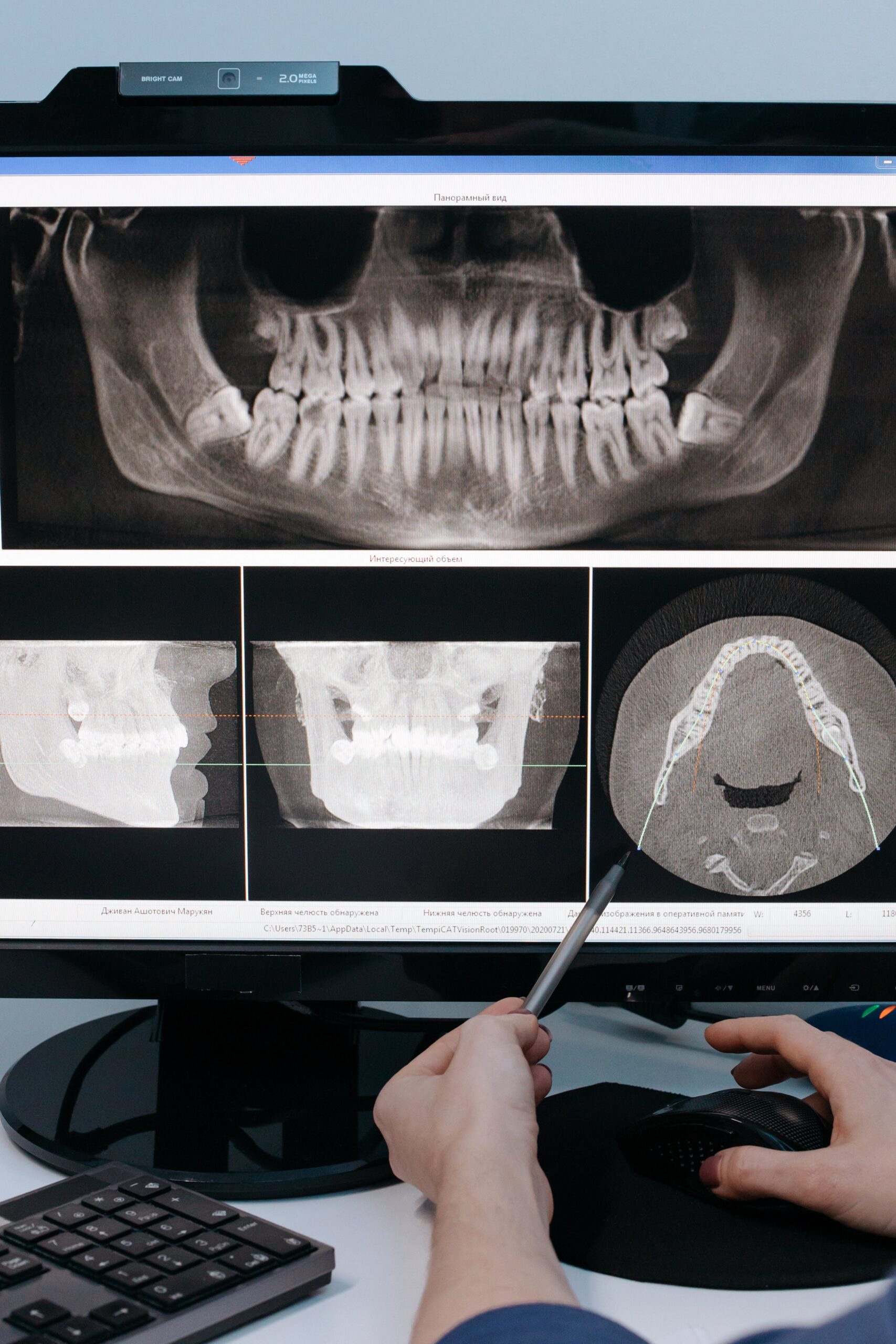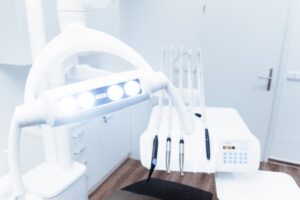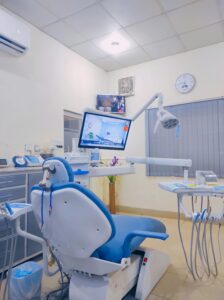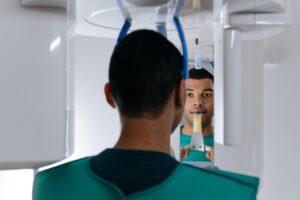
I. Introduction to X-Rays in Dentistry
From the discovery of X-Rays in 1895 by Wilhelm Röntgen, these powerful invisible rays have proven to be a boon in diverse fields. But they hold a special place in the realm of dentistry.
Brief Overview of X-Rays
In simple terms, X-Rays are a form of electromagnetic radiation that can penetrate solid objects and produce images of hidden structures. Similar to how a flashlight shines through your hand revealing the shadowy outline of your bones, X-rays work the same in picturing the body’s insides.
Application of X-Rays in Dental Science: A Historical Perspective
The fascinating saga of dental X-Rays began just a year after Röntgen’s groundbreaking discovery when, in 1896, a New Orleans dentist Otto Walkhoff created the first dental radiograph. Since then, X-rays have become an integral component of modern dentistry, paving the way for advancements that safeguard our “pearly whites”.
The Significance of X-Rays in Early Disease Detection
Remember the saying, “A stitch in time, saves nine”? The same applies to dental health. X-rays serve as an excellent preventive measure, offering dentists a crucial head start in diagnosing potential ailments, saving patients from prolonged discomfort and costly treatments.
II. Understanding the Process of Dental X-Rays
Without venturing too deep into the science, let’s grasp the basics of how dental X-Rays work.
Imagine your tooth as a hidden fortress with innumerable secrets. Now, visualize X-rays as precious rays of light that can bypass those robust walls to show the world hidden defects or ailments.
Types of Dental X-Rays: Bitewing, Panoramic, and Cone-Beam Computed Tomography (CBCT)
In dental X-ray parlance, you’ll commonly hear these terms:
-
- Bitewing: Ever had to bite down on a small paper tab? Bitewing X-rays allow a close-up look at precise areas of your mouth.
-
- Panoramic: Like a grand panoramic shot in photography, these X-rays can take an encompassing image of your entire dental structure all at a go.
-
- Cone-Beam Computed Tomography (CBCT): The CBCT is the latest entrant in dental X-ray technology. It provides three-dimensional imaging, offering an extraordinarily detailed look at your oral structures.
The Role of a Dental Professional in X-ray Imaging
It’s worth mentioning that the hero operating these innovative X-ray technologies is your dentist or dental radiographers. They skillfully coordinate the whole process, ensuring accurate images while maintaining your safety and comfort.
III. The Clinical Implications of Dental X-Rays
From minor issues like tooth decay to serious conditions like oral cancer, X-rays in dentistry have a myriad of applications.
Detection of Tooth Decay and Cavity Development
Sometimes, not all tooth decays are visible to the naked eye. Hidden in between two teeth or under an existing filling, they can continue to damage, undetected. At such times, the X-ray swoops in as a superhero, illuminating these hidden cavities.
Identification of Gum Diseases and Other Soft-Tissue Complications
X-rays can also single out lurking gum diseases, showcasing not just your teeth but also the supporting bone and root structures.
Spotting Impacted Teeth, Abscesses, and Tumors Early
From the painful perils of impacted wisdom teeth to the silent threat of tumors, dental X-rays can identify and help mitigate them all.
IV. Risks and Safeguards Associated with Dental X-Rays
Despite all these benefits of dental X-rays, concerns about radiation exposure are valid. But fear not, there are safeguards in place.
Understanding the Radiation Exposure: Risk vs Benefit
Yes, X-rays involve a small amount of radiation. But to put it into perspective, the radiation from a dental X-ray is just a tiny fraction of the natural background radiation we’re exposed to daily.
Safety Measures: Lead Aprons, Thyroid Collars, and Minimal Exposure Techniques
Every time you’re in that dentist’s chair for an X-ray, you’re shielded by a heavy lead apron and a thyroid collar. These, along with streamlined practices, ensure minimum radiation exposure.
The Importance of Frequency and Duration in X-rays
While X-rays are mostly safe, keeping them limited to necessity is a golden rule. Usually, dentists recommend them every six months to two years, depending on your dental health.
V. The Future of Dental X-Rays: Innovations and Advancements
From static images on film to high-resolution digital scans, the evolution of X-ray technology is nothing short of astounding.
The Advent of Digital X-Rays: A Revolutionary Leap
Unlike traditional film-based X-rays, digital X-rays are faster, more efficient, and expose patients to less radiation. Plus, the images can be easily stored, manipulated, and shared digitally.
3D Imaging and Its Potential
If you thought X-rays could only provide flat, two-dimensional images, brace yourself. CBCT allows 3D images of your teeth, jawbone, and soft tissues, providing an unmatched level of detail to dentists.
AI and Machine Learning in Dental X-Ray Analysis: An Emerging Horizon
Artificial Intelligence and Machine Learning have started making their presence felt in the dental world. Future innovations might include smarter algorithms capable of detecting diseases based on X-ray imagery.
VI. Conclusion: A Synopsis of the Vital Role of Dental X-Rays
In essence, dental X-rays are indeed a fantastic weapon in a dentist’s arsenal, providing in-depth knowledge and early detection. As the technology continues to evolve, we can look forward to even better ways of maintaining and improving our dental health.
VII. Frequently Asked Questions (FAQs)
Are Dental X-Rays Safe?
Yes, they are, especially when done under the professional supervision of a certified dentist or dental radiographers and with selective frequency.
How Often Should Dental X-Rays be Taken?
The frequency depends on your dental health. The range could be every six months to two years, but your dentist is the best person to decide this.
What Diseases Can Dental X-Rays Detect Early?
Tooth decay, gum diseases, oral infections, abscesses, cysts, tumors, impacted teeth, and several other dental issues can be detected early through dental X-rays.
Is There an Alternative to Dental X-Rays?
While there are other diagnostic tools in dentistry, for detailed internal views and early detection, dental X-rays stand out.
What Advancements Have Been Made in Dental X-Ray Technology?
From traditional film-based X-rays to digital ones and 3D imaging, monumental advancements have occurred in dental X-ray technology. The future promises even more with the potential integration of AI and Machine Learning.
Uncover a more radiant and healthier smile at Smiles in Reading – the top-notch choice for superior dental services. Our skilled team of dentists is dedicated to providing thorough and personalized care, addressing your requirements for x-ray or any other services. Smiles in Reading seamlessly integrates cutting-edge dental technology with a compassionate approach to guarantee your comfort and contentment. Embrace the simplicity of scheduling appointments online and experience dental care that goes above and beyond expectations. Rely on us to elevate your oral health and reveal the brilliance of your smile.


